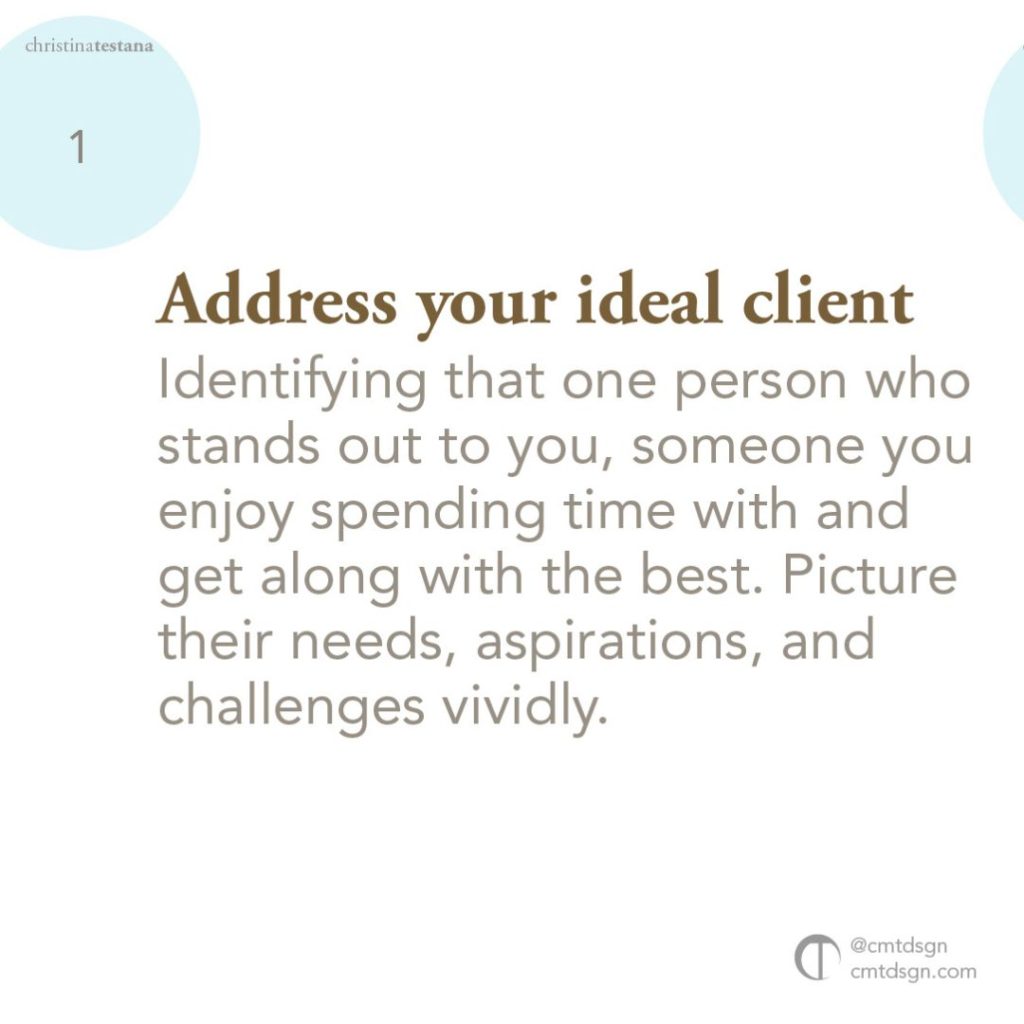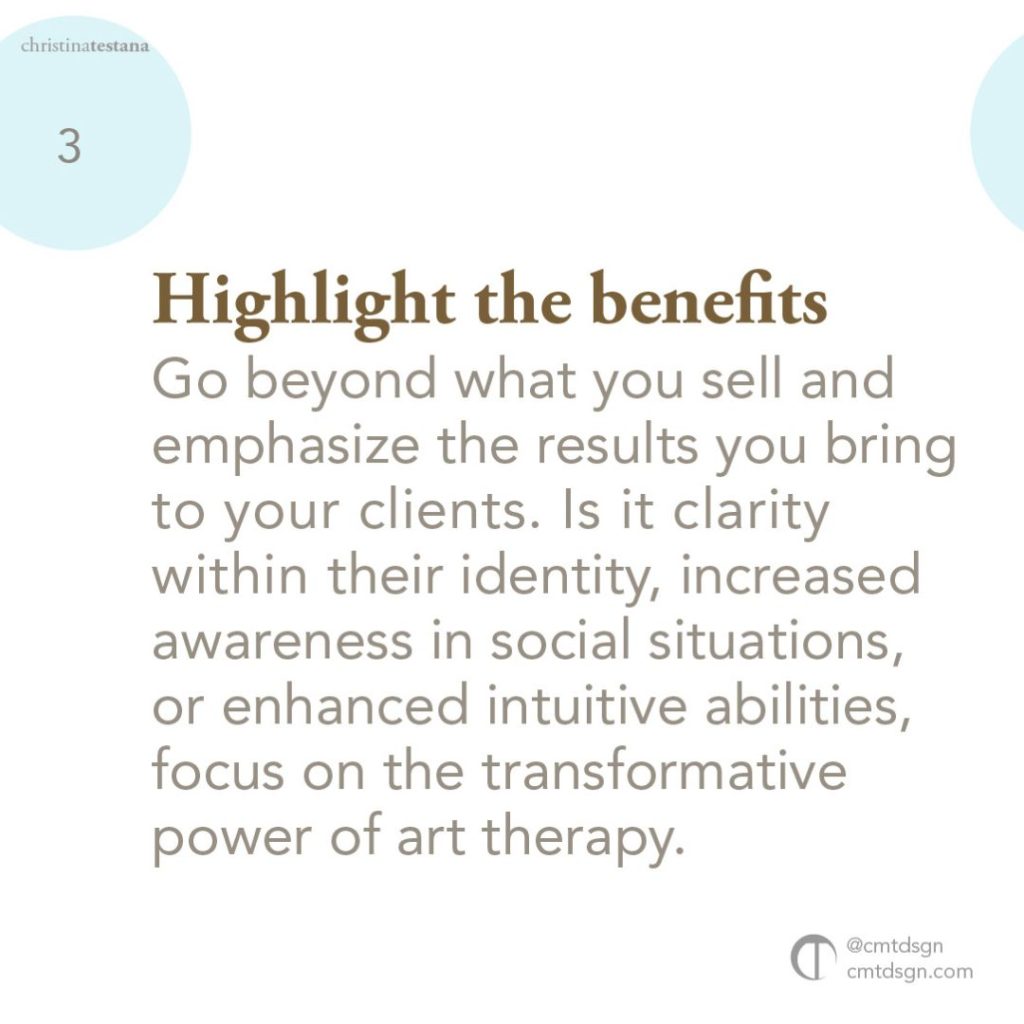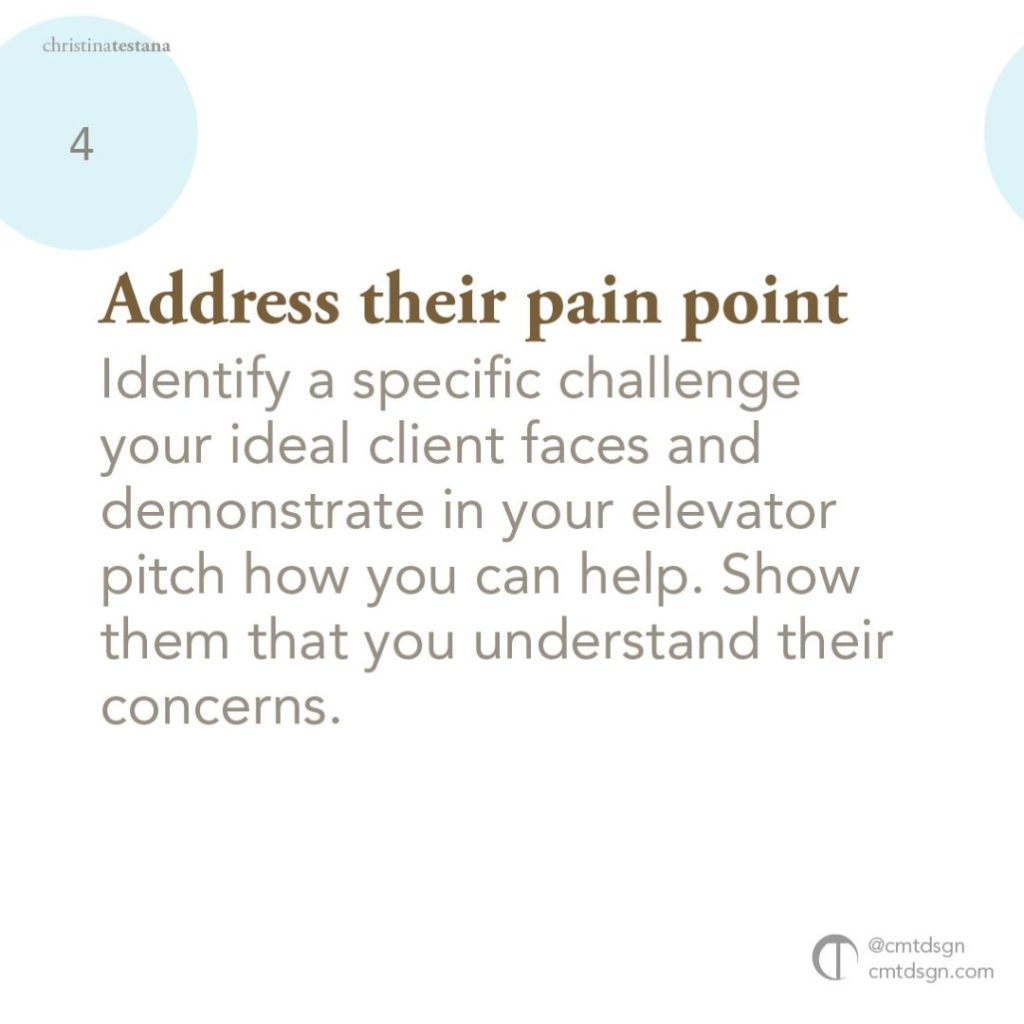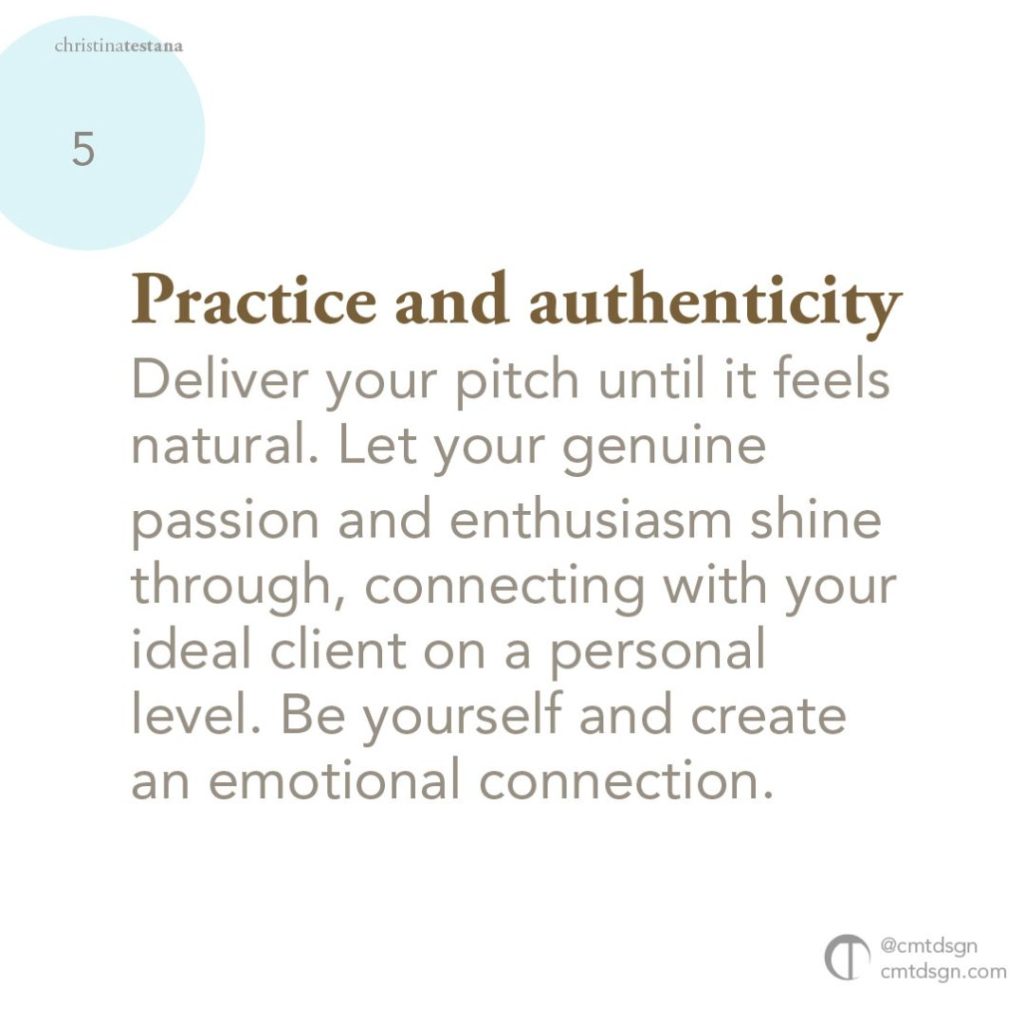Imagine: An invite pops up in your inbox for you to come to a podcast event and your heart races.
You and the collaborator are about to go live in front of an audience of potential clients, colleagues, and investors. In this moment, you have an opportunity to captivate, inspire, move hearts, and leave a remarkable impression.
But do you have a compelling elevator pitch that truly reflects your passion and expertise as an art therapist?
Crafting a compelling elevator pitch is an art. For proactive art therapists, like you, it holds the key to bringing impactful positive change to your business.
It goes beyond what you sell; it comes from a place of passion and purpose to carve your direction and build community.
How to master this elevator pitch, leave an impactful mark on the hearts and minds of the people you meet?
How to create an instant connection, ignite curiosity, and inspire action in a small window of just a few seconds?
In today’s reading, I will dive into the secrets of creating a compelling elevator pitch specifically for art therapists. Sharing key elements and strategies for making a lasting impression, connect with your ideal client deeply, carve out a path for building a loyal community that values YOU.
Are you ready to captivate hearts with your impeccable elevator pitch?
Let’s set sail to unlock the power of short, concise, and impactful communication that leads to abundant growth!
Understanding the Elevator Pitch for Art Therapist Branding
Firstly, let’s start by getting to know this type of vocabulary if you are not familiar with it. It’s the start of value-based marketing.
What is an elevator pitch?
An elevator pitch is a concise, simple way to communicate who you are, what you do, and the value you bring to people.
The reason for the name “elevator pitch” is because it needs to be short, quick, and to the point.
It’s useful for any brief encounters you have people, capturing the listener’s attention and leaving a memorable impression.
What is the purpose of an elevator pitch?
The purpose of an elevator pitch is to quickly express your specialized expertise or the essence of your art therapy business.
It’s a powerful tool to engage with a potential client or collaborator in a short span of time. The elevator pitch encourages curiosity about you, opening doors to further opportunities and conversations. Lastly, it leaves a lasting impression and makes you stand out in a person’s mind in the art therapy market.
Tailoring the elevator pitch to fit your art therapy style
The process of crafting elevator pitch is not one size fits all; customize it to match exactly what you do, how you do it, and what you bring to people.
All art therapist direction are different; not one is the same. This requires you to dig deep and look into the following areas to differentiate yourself:

Address your ideal client:
You can’t speak to everyone; it’s impossible. Start small and decide from the current people you hang around with to your favourite clients. Think about those people who stand out to you, who you enjoy spending time with and get along with the best. You want more of that one person and identify who that one person is. Are they introverts lost in trying to make a life transition? This is how clear you need to be in identifying your ideal client.

Language
Use simple words from seventh-grade to bring relation and understanding because the focus is painting the picture in their mind.
Art therapy vocabulary is abstract, simplify it with commonly used words that can describe what you do much easier. This demonstrates your understanding of your ideal client’s field and helps establish a connection.

Emphasize the benefits of art therapy
Go beyond your services and highlight your expertise and how it benefits your ideal client in their everyday life. Focus on the results you bring to them or a certain outline your ideal client desires. Examples such as clarity within their identity, increased awareness in social situations, and enhanced intuitive abilities. Focus on that end goal.

Address the Pain Point
Identify one challenge you’re here to solve for your ideal client and put that in your elevator pitch so they recognize what you focus on. Whether it’s setting boundaries with family members, balancing motherhood and personal time, or developing communication skills in progressive social situations. The more specific, the better it will show how your pitch can provide solutions to their concerns.
Key elements of a successful elevator pitch
Conciseness
Keep your elevator pitch to the point. It needs to capture their attention and stay within 30 seconds or less, ensuring it’s easily understood and remembered.
Share your differentiation
Clearly outline what sets you apart. It can be a specific value or benefit you offer as an art therapist and how it impacts your clients.
The hook
Start your pitch with a thought-provoking question. Spark curiosity at the onset to leave them wanting to stick around.
Ideal Client Focus
Tailor the pitch to address a specific ideal client, such as transition-seeking introverts. Highlight the impact you bring to them to help reach their aspirations.
Clarity, Simplicity, Accessibility
Use language that all humans will recognize, avoiding professional art therapy terms used within your industry and any technical terms. This will confuse your ideal client and make them feel alienated. Be accessible in the way you present your idea.
Storytelling
Stories stick with people, which levels up your relatability.
Keep it brief, but the narrative needs to illustrate the transformative power of art therapy or simply share a success story.
Call to Action
Conclude your pitch with a clear call to action.
Get your ideal client to take the next step, whether it’s scheduling a consultation, exploring your website, or connecting with you on social media. Make it easy for them to engage further with you.

Practice and Authenticity
Practice delivering your pitch until it feels natural.
You want to sound as genuine as possible in your delivery and put in the passionate and enthusiastic energy to express what you love to do. Connect with your ideal client on a personal level by being yourself.
Researching Your Target Audience
Firstly, before trying to craft an elevator pitch, it’s extremely important to understand your ideal clients’ demographics and psychographics. Conduct surveys and interviews to gain insight that will help piece together your pitch and ensure that it aligns with your ideal client.
During the interviews, be sure to ask the right questions that go deeper into their motivations, aspirations, and desires. Collect information from these three areas to build a relatable pitch because this is the data you need to include in the pitch to convert.
Take time in this area to research and learn about your ideal client. You must find five people, whether in your network or through social media and online groups. Run twenty-minute interviews and craft ten in-depth questions to gain the best insight in a short amount of time.
Keyword Research and Optimization
Most of your work might be online, and it will require you to put your elevator pitch online. You can’t forget to think about SEO (Search Engine Optimization) and the overall importance of keyword research to give your elevator pitch visibility in Google.
Take time to conduct thorough keyword research to gain insights into the search terms and phrases used by your ideal client.
One way you can find these is through Chat GPT. You can ask it a question to find SEO keywords based on a topic and clarify your ideal client. It will write out a list of keywords you should be using in your pitch for your website.
You can make it clear to Chat GPT to target high-volume, low-to-medium competition keywords to help you stand out in search results. Keyword optimization empowers you to communicate your message effectively and establish a strong online presence in the art therapy field.
Load up Chat GPT and write this into the chat box.
“What are some SEO keywords I should consider if I’m writing an elevator pitch on [state what your elevator pitch is about]? My target audience is [describe ideal client]. Please keep each keyword under 3 words.”
The words they give you, try to naturally implement them into your pitch for online use. Chat GPT
Crafting a Compelling Elevator Pitch
Follow this formula to build a strong elevator pitch for casual conversations in person or virtually. If it’s strictly for online written content, be sure to add in those SEO keywords.
Formula:
- The hook: Open with a thought-provoking question.
- Introduce yourself, the value you bring, and benefits: Keep to this formula when crafting your elevator pitch. “I help [specific ideal client] who [ideal client needs or problem] by [benefits] so that [ideal client inner desire or aspiration].”
- Share a success story: To build credibility and confidence in you.
- Call-to-action: Finish by getting your ideal client to take the next step, whether it’s to book a consultation, visit your website, or connect on social media. Make it easy for them to continue the conversation.
Making a Lasting Impression
Therefore, with the formula above, you need to practice sounding genuine so people can see how real and passionate you are about this matter.
Remember, it’s about an emotional connection with your ideal client; make them cry or laugh. To make that happen, use powerful client success stories or your own stories from your personal experiences, grouped with examples and visuals to illustrate what you are here to do.
Always, with any interaction, close it off with a call-to-action for any further engagement for future cases, giving them a place to connect more with you.
Building Loyal Community
Lastly, when you consistently deliver your elevator pitch to the public or online space, you can develop a strong presence both in person and online, especially by building art therapy communities and forums where people can connect and engage.
These digital spaces, filled with individuals interested in your work, offer an opportunity to create valuable content that attracts and nurtures them, fostering strong relationships.
By building a loyal community, you encourage user-generated content, which means your community members will speak for you and actively participate in any online events you organize. They become your brand advocates, spreading positive word-of-mouth and endorsing your services.
To build a high-quality community, focus on attracting and nurturing your desired audience. Provide valuable content, engage in meaningful conversations, and offer support and guidance.
By consistently delivering value and creating a safe space for individuals to share their experiences and challenges, you can establish yourself as a trusted resource in the art therapy field.
Evolving and Refining Your Elevator Pitch
As you engage with your ideal clients, collect feedback, and monitor the effectiveness of your elevator pitch, you will have opportunities to refine and improve it over time.
Pay attention to the reactions and responses you receive. If you notice confusion or a lack of interest, consider tweaking the wording or structure of your pitch.
Keep experimenting and adapting based on the feedback you receive to ensure your elevator pitch remains impactful and resonates with your audience.
Remember that crafting an effective elevator pitch is an ongoing process. As you gain more experience and insights, you may discover new ways to capture attention and communicate your value.
Stay open to continuous learning and refinement, and be willing to adjust your pitch as needed to ensure it remains relevant and engaging.
Conclusion
In conclusion, crafting a compelling elevator pitch is essential to art therapists for effectively communicating your value, make a lasting impression, attract you ideal clients and bring positive change strategies to your art therapy business.
By focusing on simplicity, clarity, and the specific needs of your ideal client, you can create a pitch that resonates with individuals seeking your help.
These key elements and strategies hold power in tailoring your pitch to speak to the right people.
Remember to emphasize the benefits of art therapy, include a captivating hook, highlight your differentiator, address specific pain points, and incorporate storytelling to make your pitch relatable and memorable.
Another thing to emphasize the importance of authenticity, emotional connection and the power of visuals or examples to make a mark on hearts.
Additionally, conduct thorough research on your ideal client, including demographic and psychographic insights, and utilize keyword research for online visibility. Practice your pitch until it feels natural, and always deliver it with authenticity and passion.
By consistently refining and sharing your elevator pitch, building a loyal community, and adapting based on feedback, you can establish a strong presence in the art therapy field and attract clients who resonate with your unique approach and expertise.
As I conclude, I encourage art therapists to take action and implement these strategies. Craft your elevator pitch with passion and purpose, consider the unique needs.
Remember, your elevator pitch will open doors to new opportunities, connections, and drive the positive change you seek in your art therapy business.
Embrace the art of crafting a compelling art therapists pitch, and see the transformative impact.
Your voice matters, and your elevator pitch will unlock doors of opportunity and build a thriving community of individuals who truly value your expertise.
Start today and implement lasting impression techniques that will propel your art therapy business forward.
